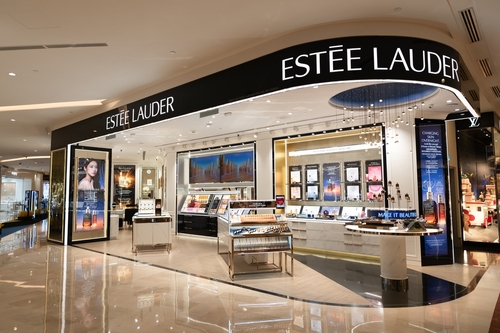|
Getting your Trinity Audio player ready...
|
\
Edited by: TJVNews.com
Estee Lauder, one of the world’s leading luxury beauty companies, has recently announced a significant change in leadership, forecasting annual profit and sales below expectations amid ongoing challenges in the global beauty market, particularly in China, as was reported by The New York Post. The company’s CEO, Fabrizio Freda, who has led the company for nearly 16 years, retired in June 2024, marking the end of an era for the brand.
Fabrizio Freda, 66, took the reins as CEO of Estee Lauder in 2009, bringing with him a vision that would shape the company’s future for over a decade and a half. According to the information provided in The Post report, under his leadership, Estee Lauder significantly expanded its skincare portfolio, a category that has become increasingly central to the company’s identity and growth strategy.
Freda was instrumental in acquiring several key brands that bolstered Estee Lauder’s presence in the skincare market. Notably, the acquisition of Dr. Jart, a popular Korean skincare brand known for its innovative products, and Deciem, the parent company of The Ordinary, which revolutionized the industry with its focus on affordable, science-driven skincare, were key moves under his leadership, as per the information in The Post report. These acquisitions not only diversified Estee Lauder’s offerings but also helped the company tap into the growing demand for specialized and accessible skincare products, particularly among younger consumers.
In addition to expanding the company’s brand portfolio, Freda also navigated Estee Lauder through some of the most challenging periods in recent history, including the COVID-19 pandemic. The global crisis disrupted supply chains and severely impacted consumer behavior, forcing the company to adapt rapidly. The Post report indicated that Freda’s response included strategic price increases to offset rising costs and a turnaround plan introduced last year that involved significant job cuts, reflecting the tough decisions required to keep the company competitive in a rapidly changing market.
Freda’s decision to retire comes at a time of considerable transition for Estee Lauder, both in terms of leadership and market conditions. His departure follows closely on the heels of Chief Financial Officer Tracey Travis’s announcement that she would step down after a 12-year tenure, The Post report explained. These leadership changes signal a critical juncture for the company as it grapples with declining demand in key markets and the need for a fresh strategic direction.
Speaking to The Post, Dana Telsey of the Telsey Advisory Group commented on Freda’s retirement, noting, “It’s not a surprise that Fabrizio is stepping down. It was a long-anticipated change of the guard, given the results over the past few years and the need certainly for newness.” Telsey’s remarks highlight the broader industry context in which Estee Lauder is operating—a market that demands innovation and agility, especially as traditional luxury brands face increasing competition from upstart brands and evolving consumer preferences.
One of the most significant challenges facing Estee Lauder, and indeed the entire beauty industry, is the slowing demand in China, a market that has been a major growth engine for luxury brands in recent years. Indicated in The Post report was that the Chinese market, once a beacon of opportunity, has shown signs of weakening as economic uncertainties and changing consumer behaviors take their toll. This slowdown has had a pronounced impact on Estee Lauder’s financial performance, contributing to the company’s lower-than-expected profit and sales forecasts.
In addition to the challenges in China, prolonged inflation globally has further complicated the market landscape. The report in The Post observed that rising costs have pressured both the company’s margins and consumer spending, making it difficult for luxury brands to maintain their traditional pricing power. Estee Lauder, like many of its peers, has had to navigate this environment by balancing the need to protect profitability with the risk of alienating price-sensitive consumers.
Since reaching a record high of $374.20 per share in January 2022, Estee Lauder’s stock has experienced significant volatility. As per the information contained in The Post report, the shares have seen a steep decline, losing nearly 75% of their value, reflecting investor concerns about the company’s ability to sustain growth in a challenging economic environment. The announcement of Freda’s retirement added to this uncertainty, with shares seesawing in early trading before settling marginally down.
In a recent post-earnings call with analysts, the company’s Chief Financial Officer, Tracey Travis, provided insights into the financial outlook for fiscal 2025, highlighting both opportunities for growth and areas of concern.
Travis indicated that Estee Lauder expects profit to improve in fiscal 2025, driven largely by the company’s ongoing turnaround plan and growth in key markets, including the Americas, the Asia-Pacific region (excluding China), and Europe, with the exception of travel retail, as was detailed in The Post report. However, the forecast was tempered by the company’s more conservative expectations for overall sales growth.
The Post report confirmed that Estee Lauder projects that annual sales could either decline by as much as 1% or increase by up to 2%. This outlook falls short of analysts’ more optimistic projections, which anticipated a 6.4% rise in sales, according to data from LSEG. The cautious guidance calls attention to the challenges the company faces in revitalizing its growth amid a sluggish global economy and persistent weakness in certain key markets.
In terms of profitability, Estee Lauder expects its annual adjusted profit per share to fall within the range of $2.75 to $2.95. This is significantly below the $3.96 that analysts had forecasted, reflecting the ongoing pressures on the company’s bottom line. The report added that the lower profit expectations are a clear indication that the luxury beauty segment, long considered resilient even in tough economic times, is not immune to the broader market challenges.
One of the more surprising developments in recent months has been the weakening demand for what are often referred to as “affordable luxuries,” such as lipsticks and perfumes. These products have traditionally been viewed as recession-proof, offering consumers a way to indulge in luxury without the high price tag of more expensive items, the report in The Post observed. However, even these staples of the beauty industry are seeing a decline in demand, reflecting broader shifts in consumer behavior as economic pressures mount.
Estee Lauder has noted that the prestige beauty segment in China, once a major growth driver for the company, continues to struggle. The anticipated rebound in demand has not materialized, leading to ongoing declines in this critical market. The challenges in China are particularly concerning, given the country’s significant contribution to Estee Lauder’s global sales and its role as a bellwether for luxury spending in Asia.
The situation in Europe is also less than encouraging. The Post also reported that Estee Lauder’s peer, L’Oreal, has highlighted the lack of a rebound in the region, further emphasizing the widespread nature of the demand slowdown. The travel retail segment, which includes duty-free shops in airports—a traditionally lucrative channel for luxury beauty brands—remains particularly weak, exacerbating the challenges in Europe.
In response to these challenges, Estee Lauder is relying on its turnaround plan to stabilize the business and set the stage for future growth. As was revealed in The Post report, the plan, which includes measures such as cost-cutting, streamlining operations, and targeted investments in growth areas, is designed to improve profitability and enhance the company’s competitiveness in a difficult market environment.
Growth in the Americas and the Asia-Pacific region outside of China offers some hope for the company. These regions have shown more resilience in the face of economic headwinds, and Estee Lauder is likely to focus its efforts on capitalizing on these opportunities, The Post report speculated. In particular, the company may look to expand its presence in emerging markets within these regions, where rising disposable incomes and growing consumer interest in luxury beauty present potential for long-term growth.
Despite the challenges, Estee Lauder remains a formidable player in the global beauty industry, with a strong brand portfolio that includes iconic names such as La Mer, Clinique, and MAC, as was reported by The Post. The company’s ability to adapt to changing market conditions and consumer preferences will be crucial as it navigates this period of uncertainty.
As Estee Lauder heads into fiscal 2025, it does so with a mix of cautious optimism and strategic resolve. The company’s financial outlook reflects the realities of a challenging market, with lower-than-expected sales and profit forecasts underscoring the difficulties ahead. However, with a clear focus on executing its turnaround plan and leveraging growth opportunities in more resilient regions, Estee Lauder is positioning itself to weather the storm.




